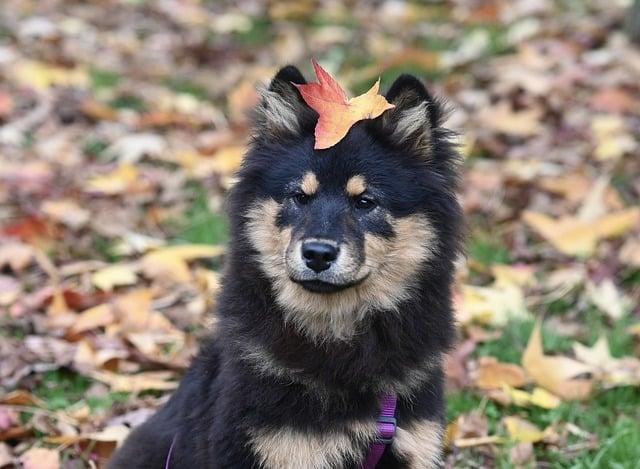At six months old, Max, a spirited golden retriever, discovered the art of mischief. One sunny afternoon, while his owner was distracted, he unleashed chaos in the living room. Pillows flew, shoes were chewed, and a trail of shredded paper led to his proud, wagging tail. This playful age, often dubbed the “naughtiest dog age,” is crucial for training. Embrace this phase with patience and guidance, and you’ll transform that rambunctious energy into a well-behaved companion. Remember, every naughty moment is a training opportunity!
Contents
- Understanding the Developmental Stages of Canine Mischief
- Identifying the Peak Naughty Behavior in Dogs
- Effective Training Strategies for Managing Mischievous Dogs
- Creating a Positive Environment to Minimize Naughtiness
- Q&A
Understanding the Developmental Stages of Canine Mischief
Every dog goes through various developmental stages, each bringing its own unique challenges and opportunities for mischief. Understanding these stages can help pet owners navigate the often tumultuous waters of canine behavior. During the puppy stage, which typically lasts until around six months of age, dogs are naturally curious and eager to explore their environment. This is when they are most likely to engage in playful yet destructive behaviors, such as chewing on furniture or digging in the yard.
As dogs transition into the adolescent stage, usually between six months and two years, their mischievous tendencies can escalate. This period is marked by a surge in energy and independence, leading to behaviors that may test a pet owner’s patience. Common antics during this phase include:
- Escaping from the yard
- Ignoring commands
- Excessive barking
- Counter surfing for food
These behaviors stem from a combination of hormonal changes and a desire to assert their newfound autonomy. It’s crucial for owners to remain consistent with training and boundaries during this time to curb unwanted behaviors effectively.
Once dogs reach the adult stage, typically around two to three years of age, their mischievousness often begins to stabilize. However, this does not mean they are free from trouble. Adult dogs may still engage in mischief, particularly if they are bored or lack sufficient exercise. Owners should focus on providing mental stimulation and physical activity to keep their dogs engaged and reduce the likelihood of naughty behaviors. Activities such as:
- Interactive toys
- Agility training
- Regular walks and playtime
can significantly contribute to a well-behaved adult dog. Recognizing the developmental stages of canine mischief allows owners to tailor their training and care strategies effectively, ensuring a harmonious relationship with their furry companions.
Identifying the Peak Naughty Behavior in Dogs
Understanding when dogs exhibit their most mischievous behaviors is crucial for pet owners. Generally, the peak of naughty behavior tends to occur during specific developmental stages. For many breeds, this phase often aligns with their adolescent years, typically between six months to two years of age. During this time, dogs are not only testing boundaries but also exploring their newfound independence.
During this stage, you may notice a variety of behaviors that can be classified as naughty, including:
- Chewing furniture or shoes: This is a common way for dogs to relieve boredom or anxiety.
- Jumping on guests: Excitement can lead to overzealous greetings, which can be perceived as rude behavior.
- Digging in the yard: Dogs often dig to explore or release pent-up energy, which can be frustrating for owners.
- Ignoring commands: As they assert their independence, dogs may choose to selectively listen, testing their owner’s authority.
Moreover, the socialization aspect plays a significant role in this behavior. Dogs are naturally curious creatures, and during their adolescent phase, they are more likely to engage in social interactions with other dogs and people. This can lead to both positive and negative experiences, influencing their behavior. A lack of proper socialization can result in increased naughtiness, as they may not know how to behave appropriately in various situations.
It’s essential for dog owners to recognize that this phase is temporary and can be managed with consistent training and positive reinforcement. Establishing clear boundaries and providing ample physical and mental stimulation can significantly reduce naughty behaviors. Engaging in regular exercise, interactive play, and obedience training can help channel their energy into more acceptable outlets, ultimately leading to a well-behaved companion.
Effective Training Strategies for Managing Mischievous Dogs
When it comes to managing the antics of a mischievous dog, implementing effective training strategies is essential. One of the most successful approaches is **positive reinforcement**. This method involves rewarding your dog for good behavior, which encourages them to repeat those actions. Treats, praise, and playtime can all serve as powerful motivators. By consistently reinforcing desired behaviors, you can gradually diminish the naughty tendencies that often emerge during their more rambunctious phases.
Another key strategy is establishing a **structured routine**. Dogs thrive on predictability, and having a set schedule for feeding, walks, and playtime can help reduce anxiety and mischief. Incorporating regular training sessions into this routine not only reinforces good behavior but also provides mental stimulation. Engaging your dog in activities that challenge their intellect can redirect their energy away from destructive behaviors, making them less likely to engage in mischief.
Socialization is also a critical component in managing a dog’s naughty behavior. Exposing your dog to various environments, people, and other animals can help them learn appropriate behaviors in different contexts. Consider enrolling your dog in **obedience classes** or arranging playdates with well-behaved dogs. This not only helps them learn how to interact positively but also builds their confidence, reducing the likelihood of mischief stemming from fear or insecurity.
Lastly, consistency is paramount in any training regimen. Ensure that all family members are on the same page regarding rules and commands. Mixed signals can confuse your dog and lead to more mischievous behavior. By maintaining a united front and being patient, you can effectively guide your dog through their naughtiest phases, transforming them into a well-behaved companion. Remember, the goal is to create a positive and trusting relationship, where your dog feels secure and understands what is expected of them.
Creating a Positive Environment to Minimize Naughtiness
Creating a nurturing atmosphere is essential for fostering good behavior in dogs, especially during their more mischievous phases. By establishing a positive environment, you can significantly reduce instances of naughtiness. This involves not only providing physical comfort but also engaging your dog mentally and emotionally. A well-stimulated dog is less likely to resort to unwanted behaviors out of boredom or frustration.
One effective strategy is to incorporate **consistent routines** into your dog’s daily life. Dogs thrive on predictability, and having a structured schedule for feeding, walks, and playtime can help them feel secure. Additionally, consider implementing **positive reinforcement techniques**. Rewarding your dog for good behavior with treats, praise, or playtime encourages them to repeat those behaviors, creating a cycle of positivity that discourages naughtiness.
Socialization plays a crucial role in minimizing undesirable behaviors. Exposing your dog to various environments, people, and other animals can help them develop confidence and reduce anxiety. Organize **playdates** or enroll in **training classes** to provide your dog with opportunities to learn appropriate social skills. This not only helps in curbing naughtiness but also strengthens the bond between you and your furry friend.
Lastly, ensure that your dog has access to **appropriate outlets for their energy**. Regular exercise is vital for a well-behaved dog. Engage in activities such as fetch, agility training, or even simple walks to keep your dog physically active. Additionally, consider providing interactive toys or puzzles that challenge their minds. By channeling their energy into constructive activities, you can significantly reduce the likelihood of naughtiness and promote a harmonious living environment.
Q&A
-
What age do dogs become the naughtiest?
The naughtiest age for dogs typically falls between 6 months to 2 years. During this period, dogs are often full of energy and curiosity, leading to mischievous behavior as they explore their environment.
-
Why do dogs act out during their teenage years?
Just like human teenagers, dogs experience a phase of independence and testing boundaries. This is a crucial time for training, as they may challenge commands and exhibit rebellious behavior.
-
How can I manage my dog’s naughty behavior?
Consistent training, positive reinforcement, and regular exercise are key strategies. Engaging your dog in mental and physical activities can help channel their energy into more productive behaviors.
-
Does the naughtiness decrease with age?
Yes, as dogs mature, their behavior typically stabilizes. Most dogs become less mischievous after the age of 2, as they settle into their adult personalities and respond better to training.
understanding the naughtiest dog age is crucial for effective training and fostering a harmonious relationship with your furry friend. Embrace this phase with patience and guidance, and watch your pup transform into a well-behaved companion.




